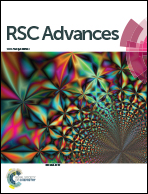Simplified aptamer-based colorimetric method using unmodified gold nanoparticles for the detection of carcinoma embryonic antigen
Abstract
Here, we described a simple and sensitive colorimetric method for the detection of carcinoma embryonic antigen (CEA), which was based on the phenomenon of salt-induced gold nanoparticles (AuNPs) aggregation and the conformation change of CEA's single-stranded DNA aptamer modified with a sulfhydryl group. Because of the reaction between the thiol group and AuNPs, the aptamer could bind to the surface of AuNPs strongly. AuNPs modified with aptamer had good stability in a high concentration of saline solution because of the repulsion of negative charges among the aptamers. In the presence of CEA, the aptamer tended to form a CEA-aptamer duplex instead of binding to the surface of AuNPs. As a result, the AuNPs changed its color from red to blue easily due to the salt-induced aggregation in the presence of CEA. Accordingly, the CEA was detected using this method. By adjusting the amount of the aptamer and NaCl added, a sensitive linear range for CEA was obtained. Under the optimum conditions, the detection limit for CEA was 3 ng mL−1. This rapid, label-free assay using colorimetric method showed high sensitivity for CEA detection, which made it a practical way in some cancer biomarker detections.


 Please wait while we load your content...
Please wait while we load your content...